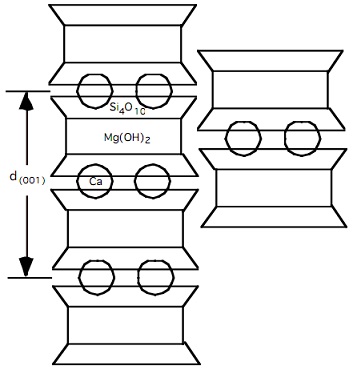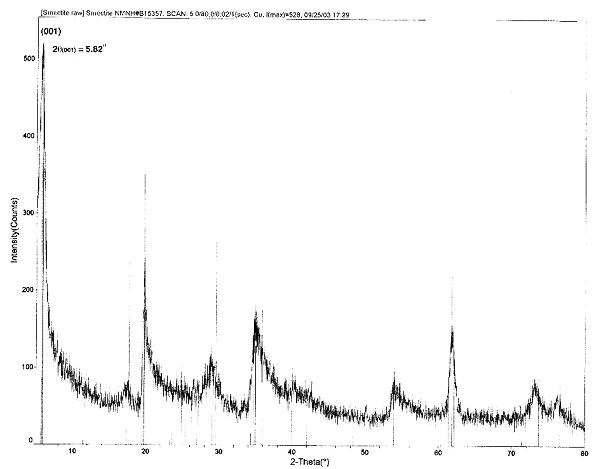Question 1: Many hills in California are known to have troubles with landslides when heavy rains soak the area. The clay smectite is frequently found as a major mineral component within the soils of these hills. Smectite is known as a phyllosilicate (layered or sheet silicate: see figure below).

The California Geological Survey analyzed two samples using XRD: one dry soil, and one wet soil. The XRD powder pattern for the dry smectite-rich soil is shown in figure below. Using the Bragg equation (assuming n = 1) and the fact that Cu Kα radiation was used (where λ = 1.541 Å), what is the d-spacing for the (001) peak found at 2θ = 5.82o?

Question 2: For the wet soil sample, the (001) peak shifts to 2θ = 4.20o. Calculate the d-spacing for the wet smectite.
Question 3: What happened to the smectite crystal structure, when it was exposed to water?
Question 4: The shape of the dry smectite (001) diffraction peak (and others) in Figure above is not symmetrical: sharp on the low 2θ side and very broad on the high 2θ side. What does the shape indicate about the distribution of the d-spacings associated with that diffraction peak?
Question 5: How does this structural change in smectite relate to the larger scale structural instability of the landforms when exposed to heavy rain?